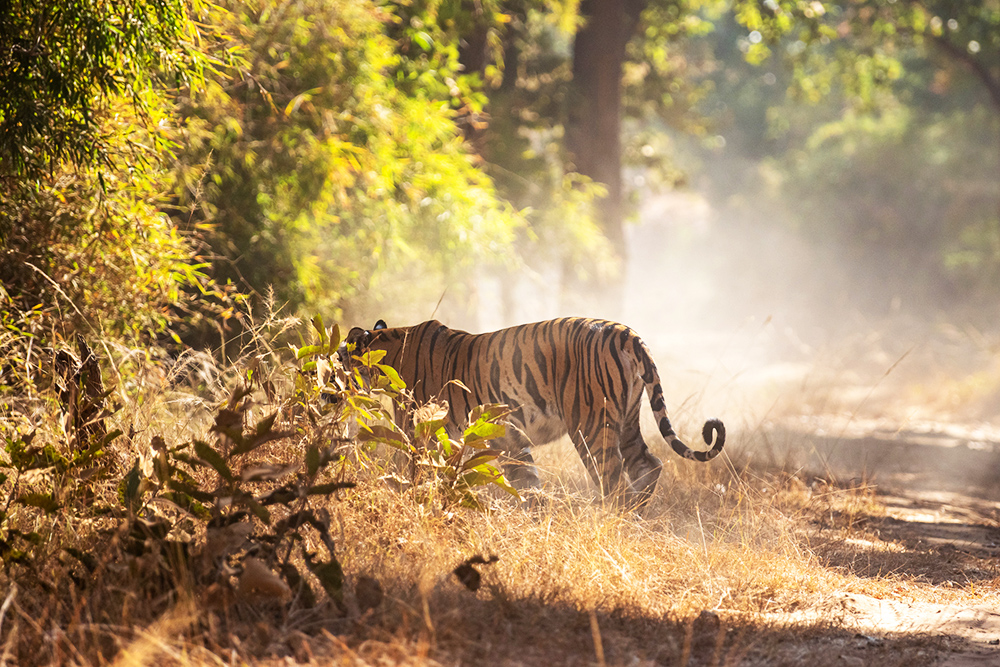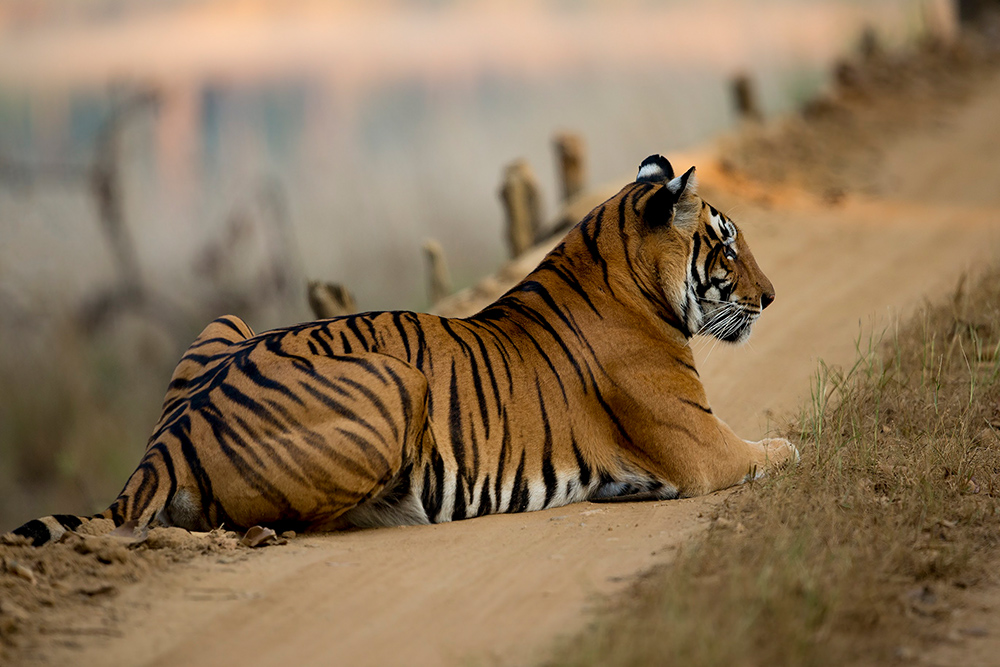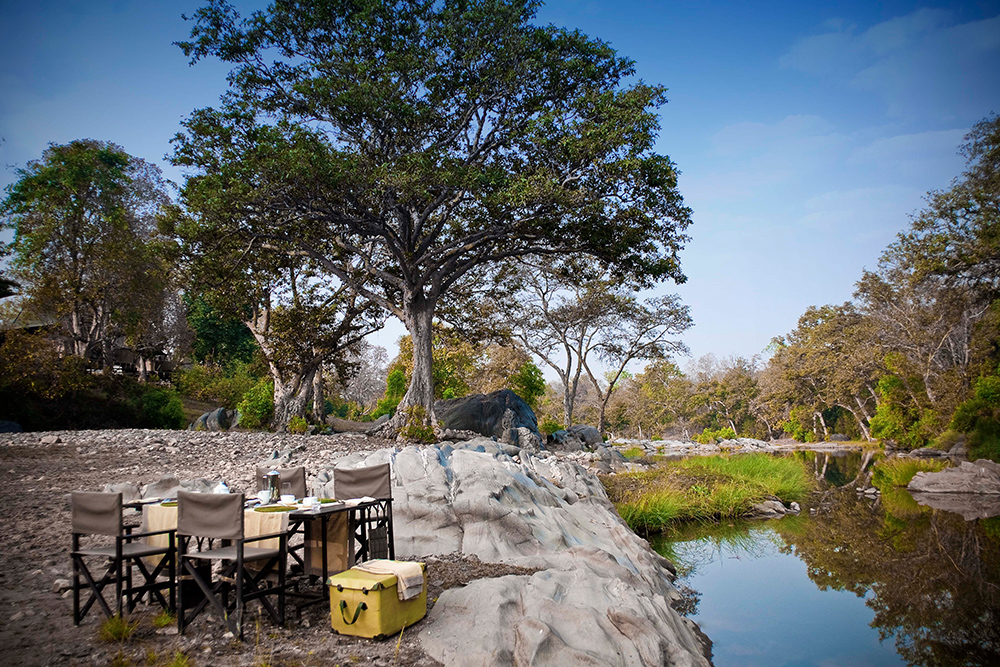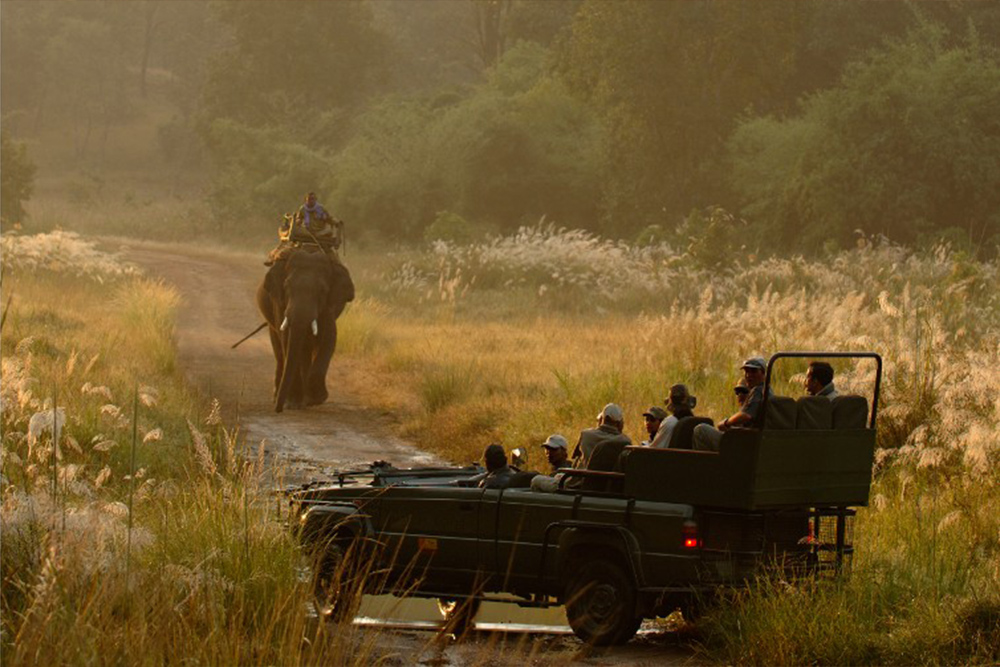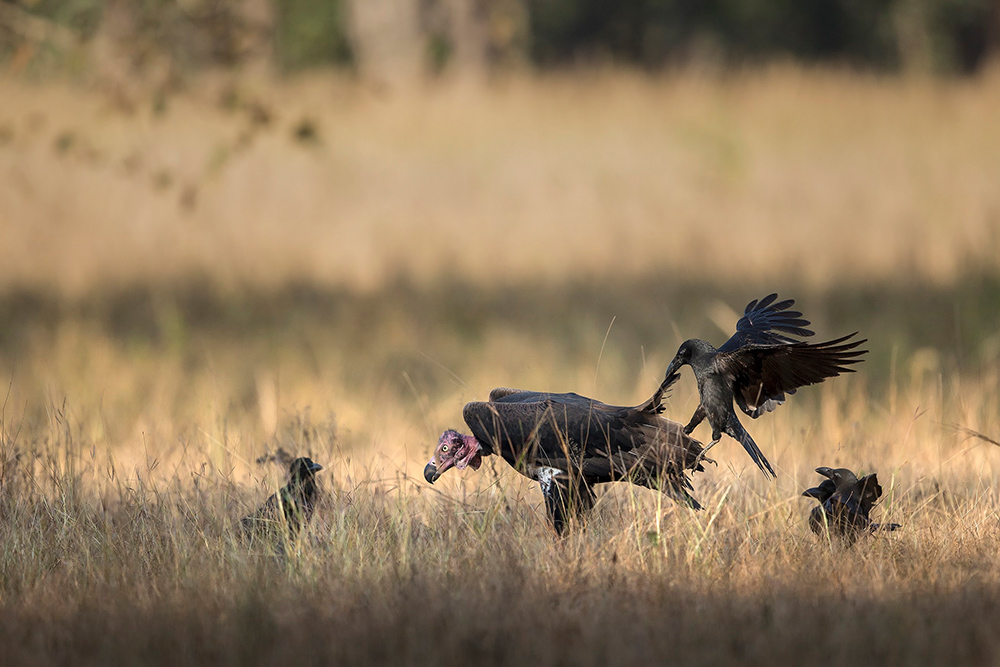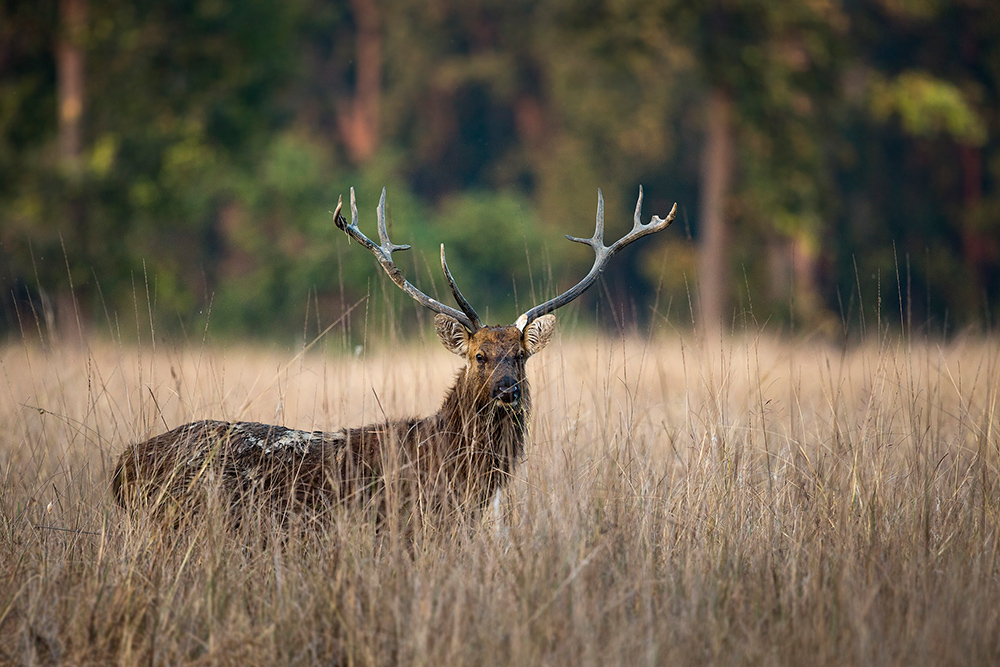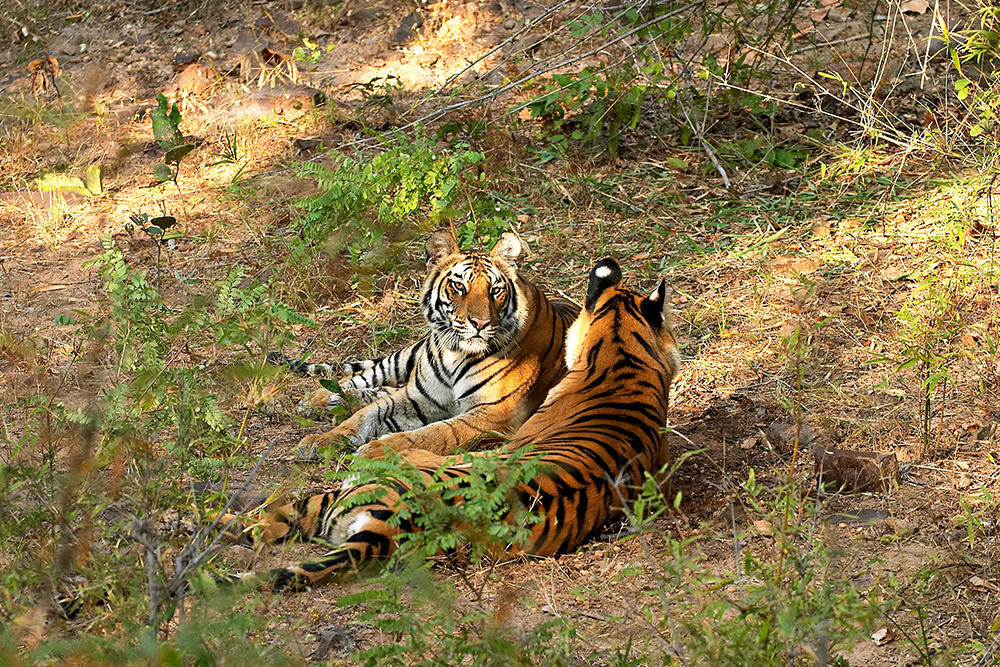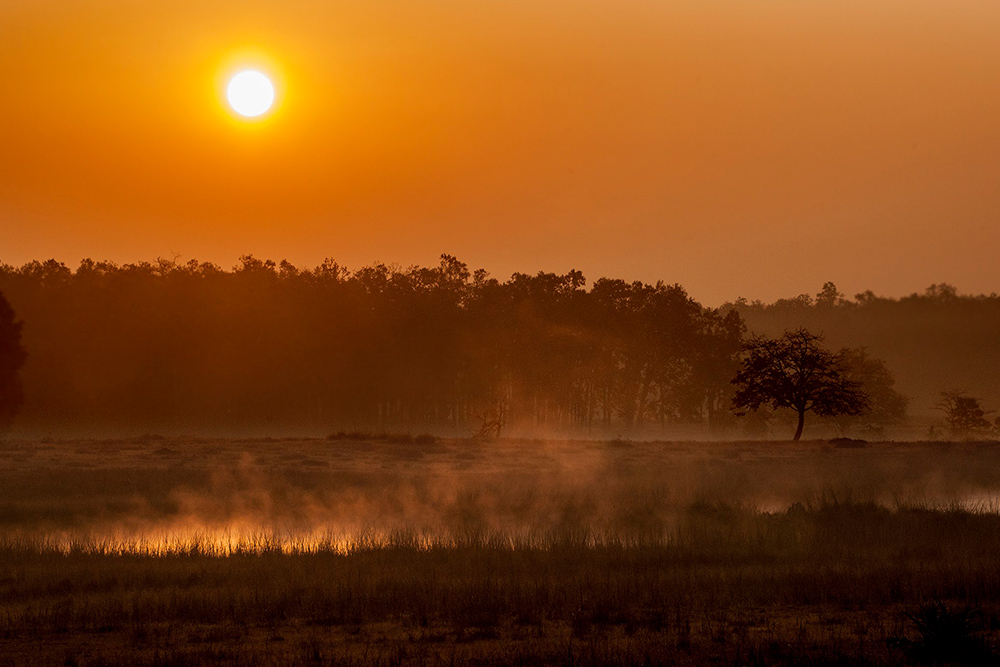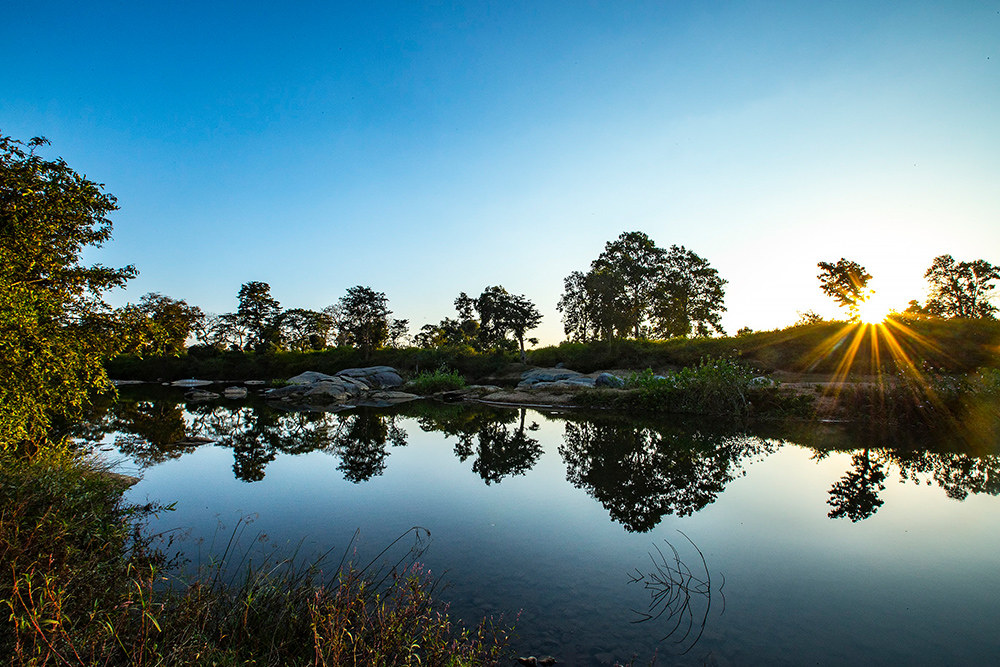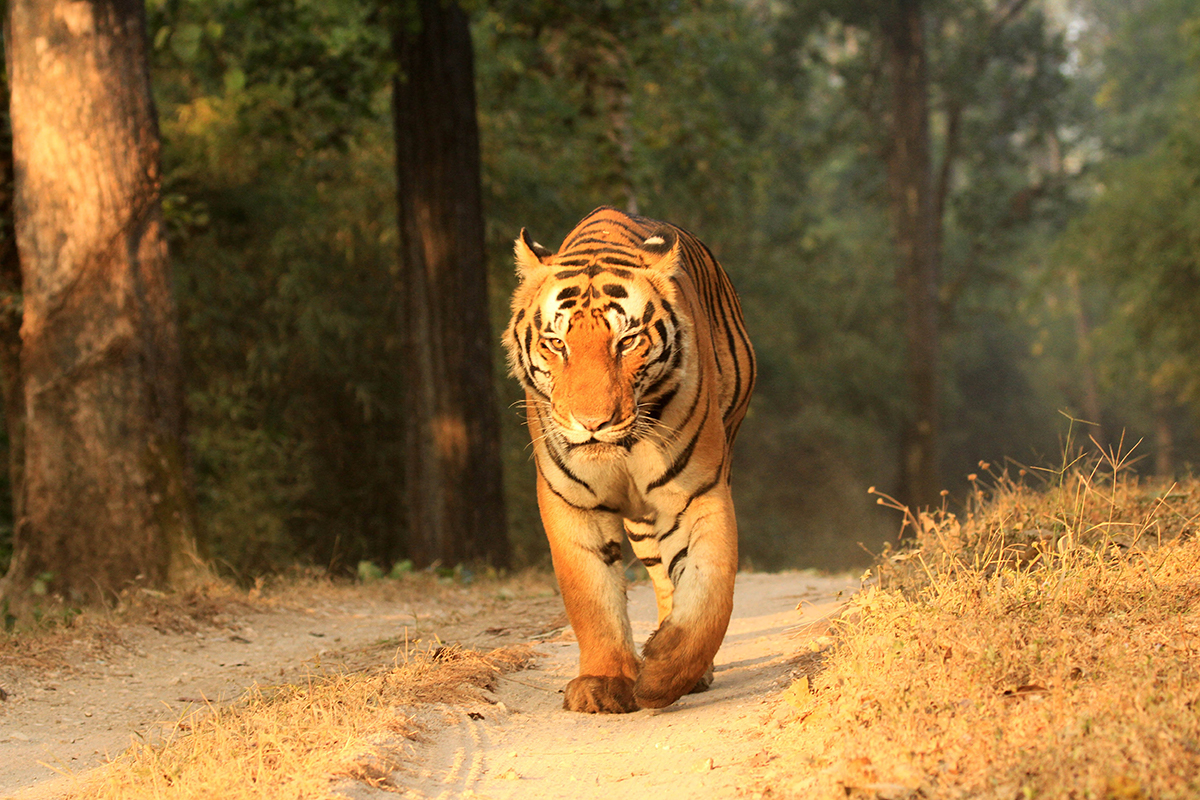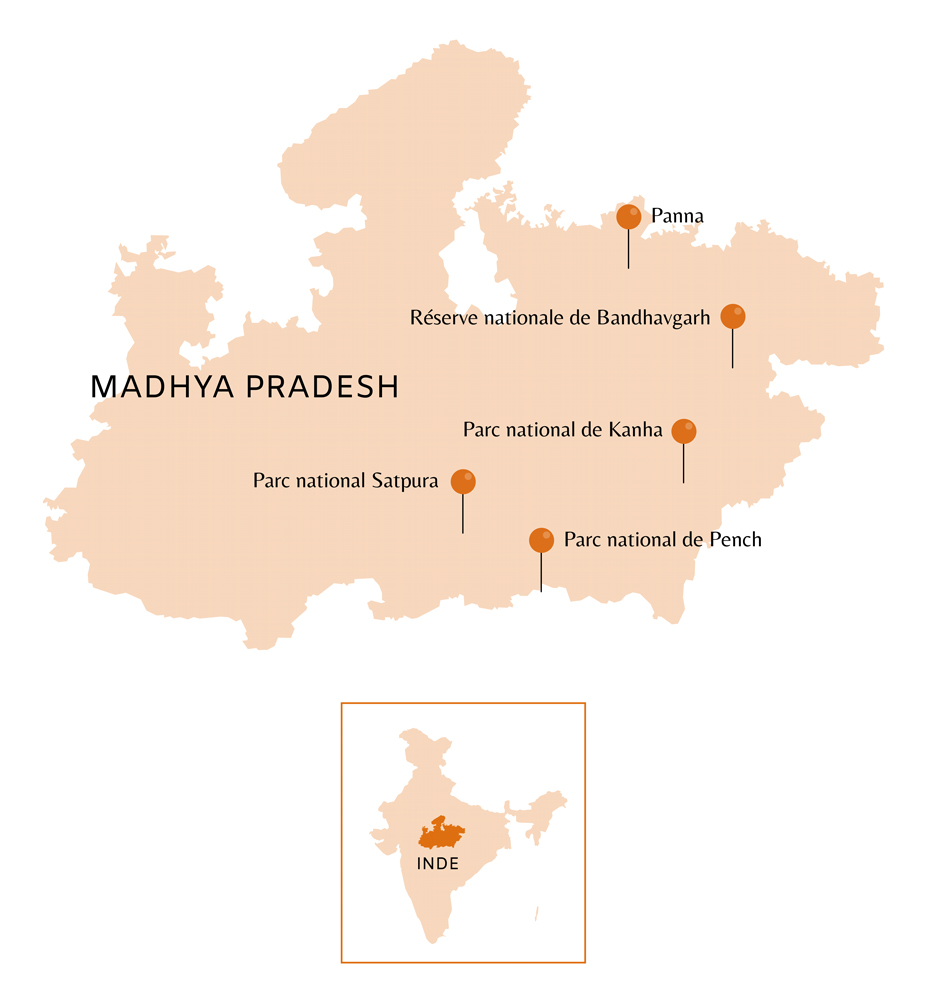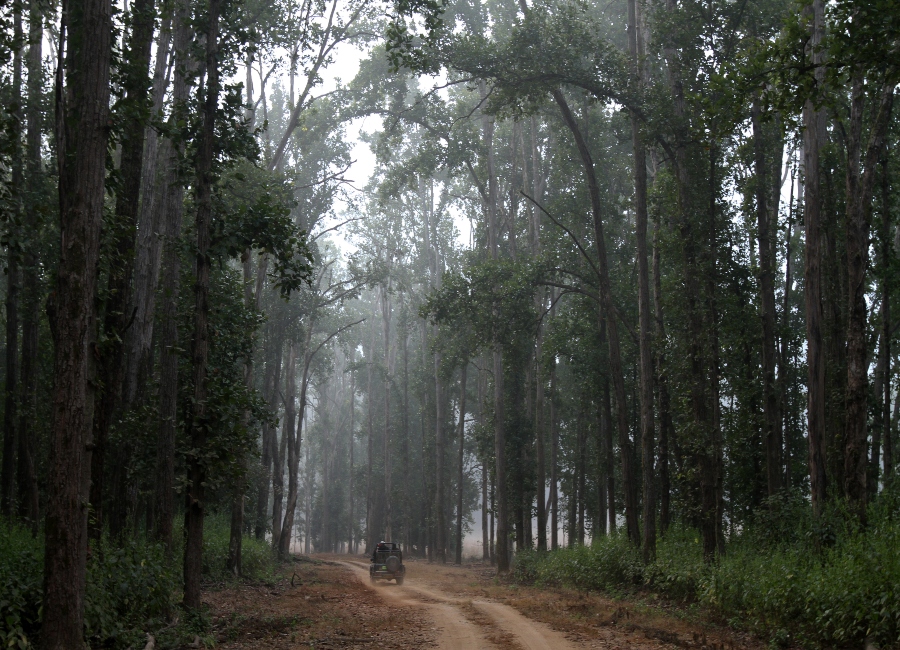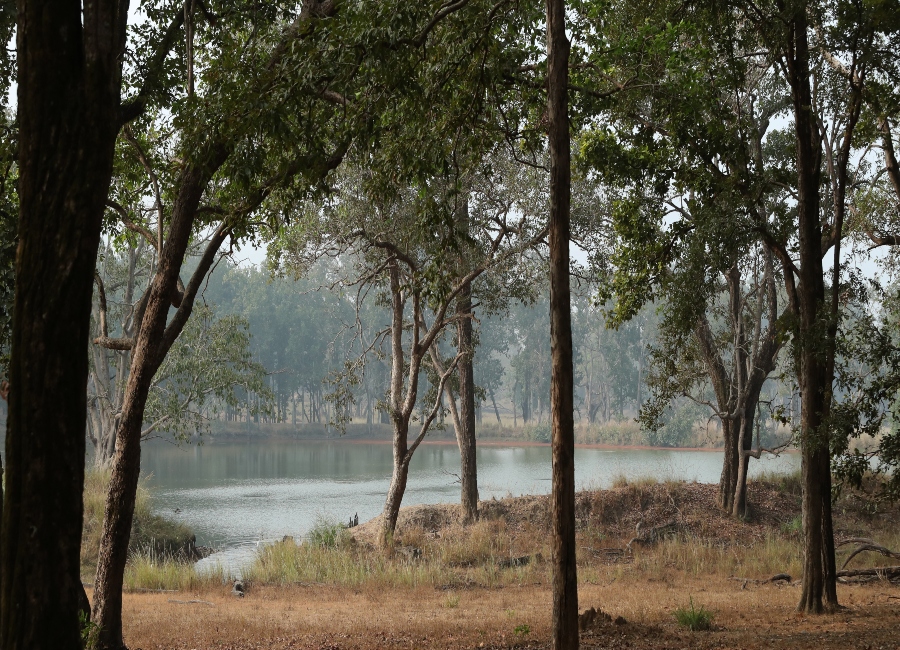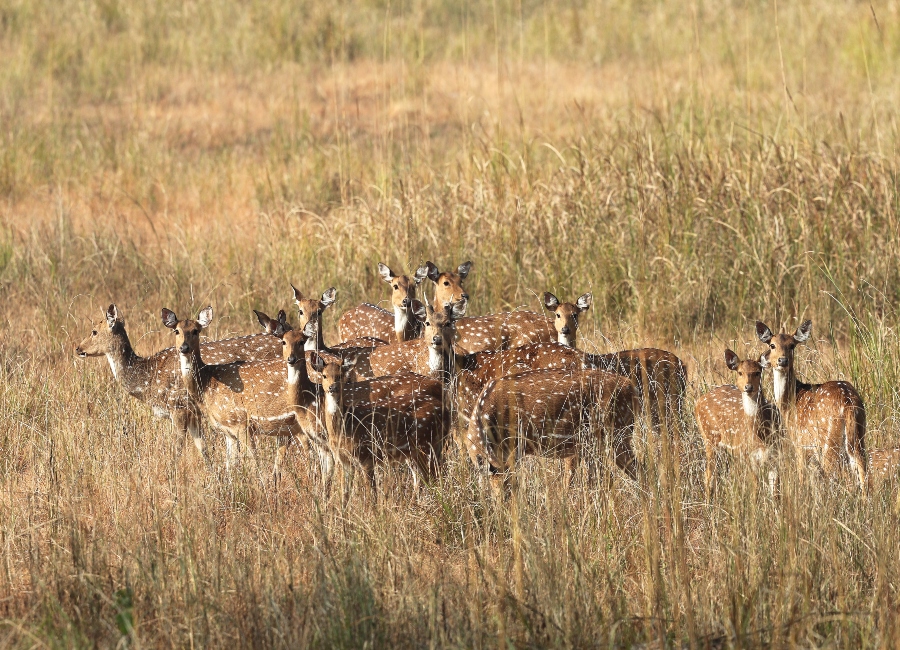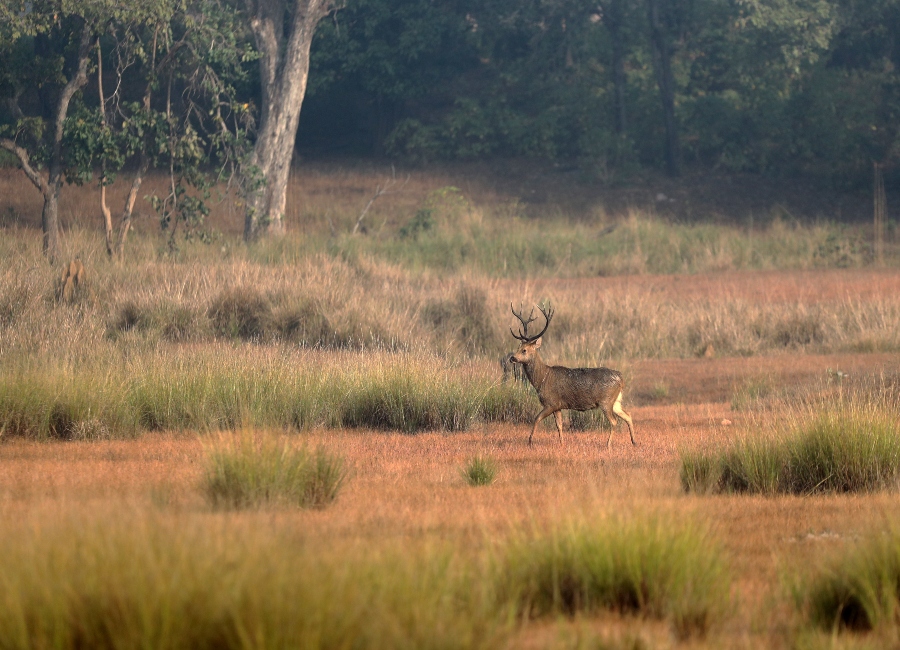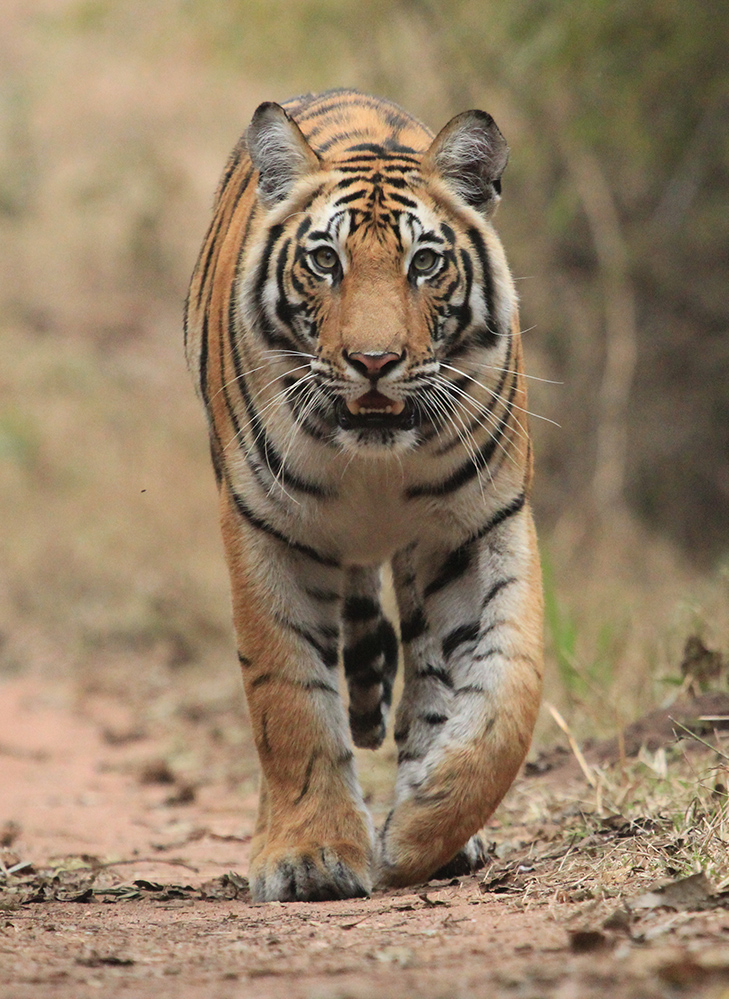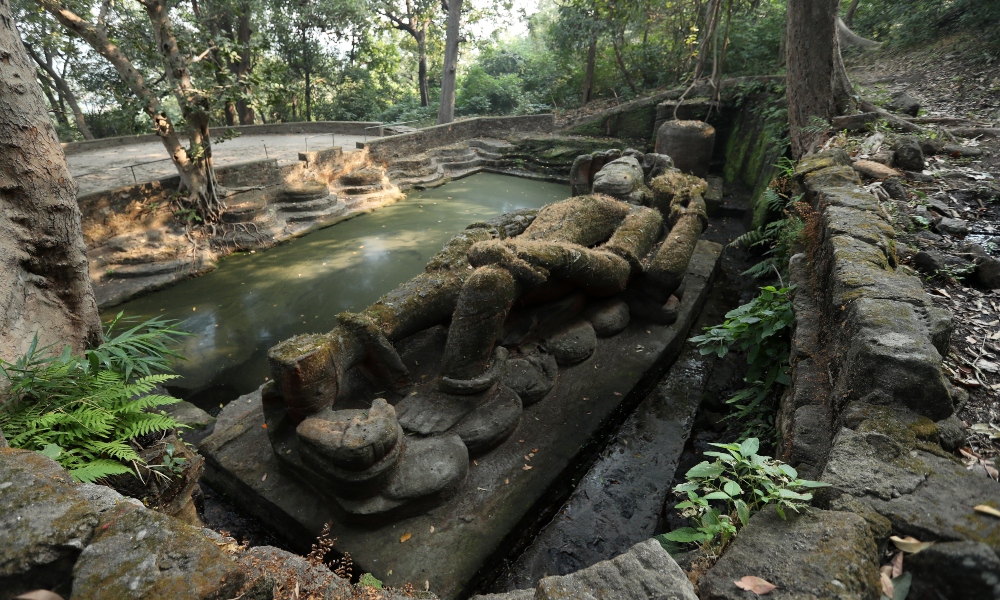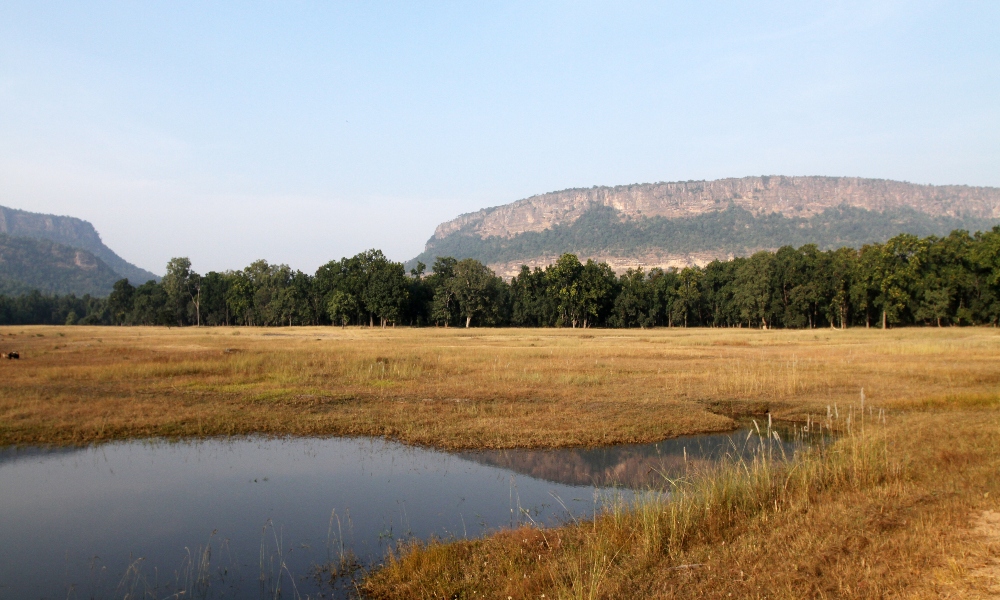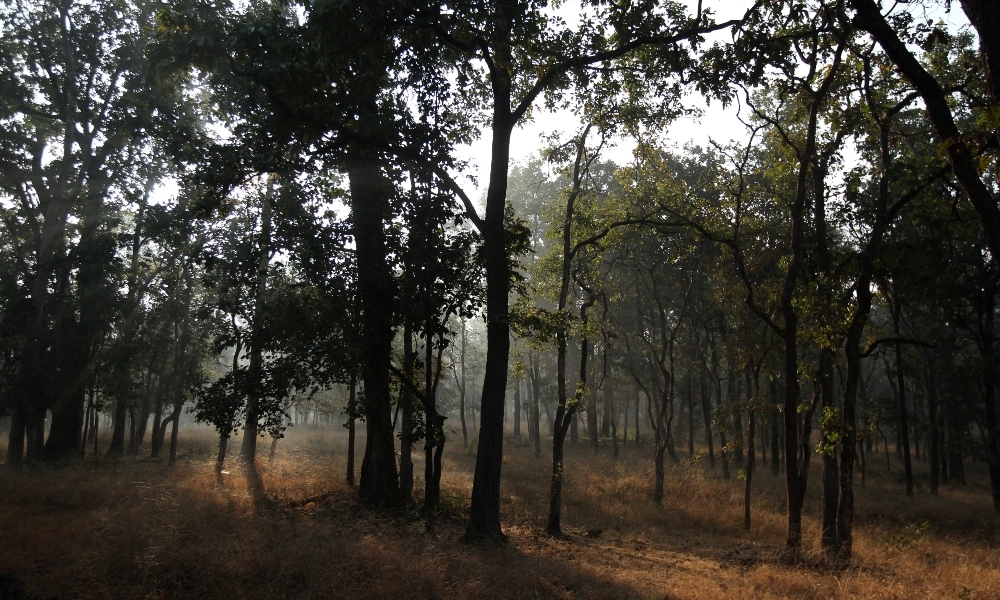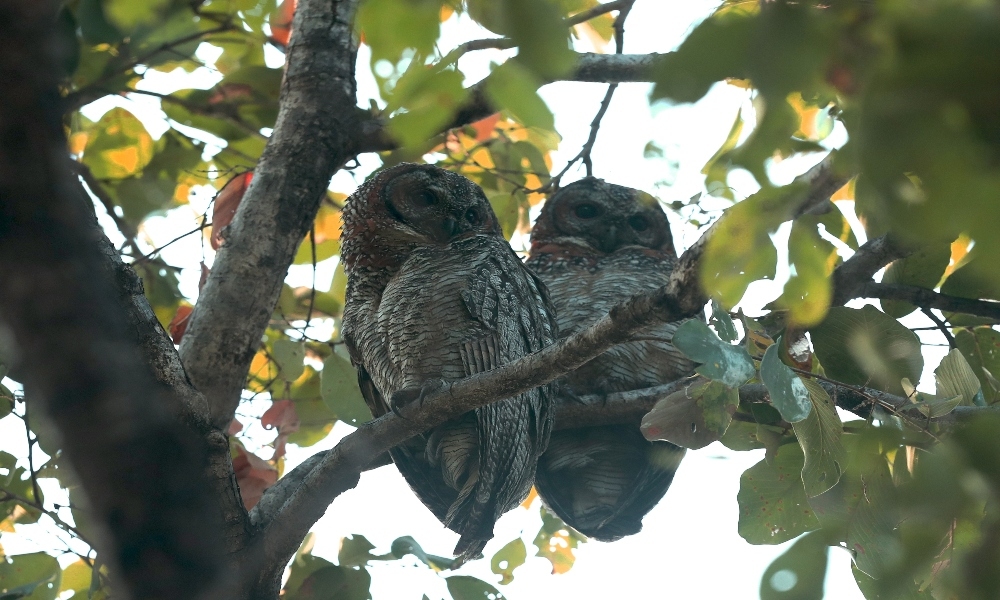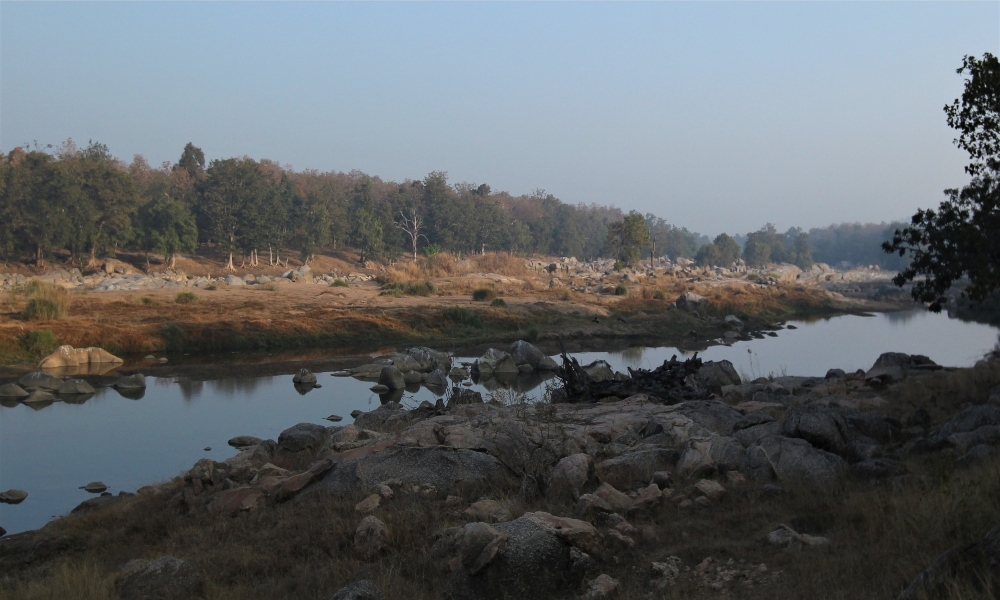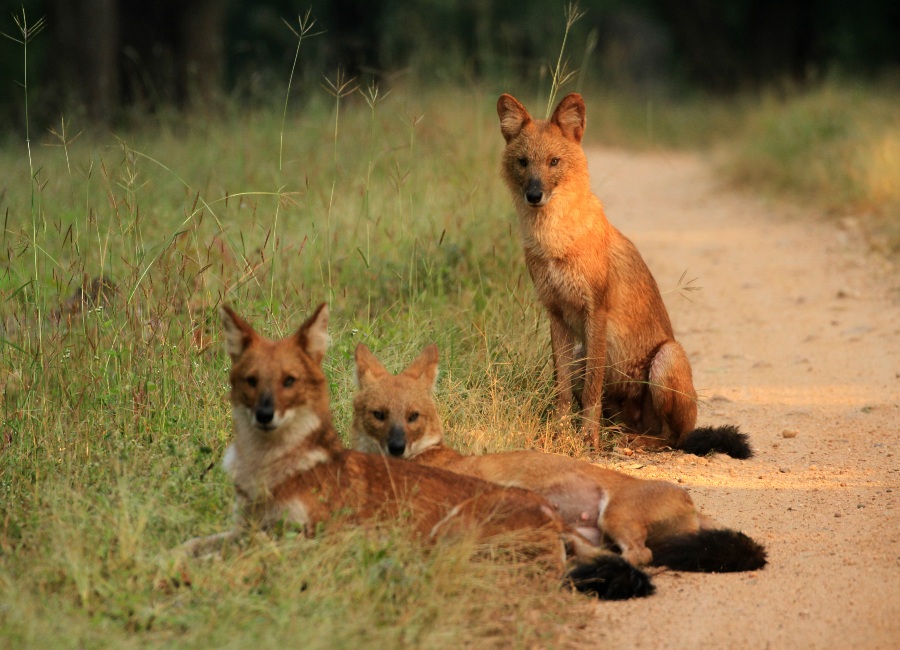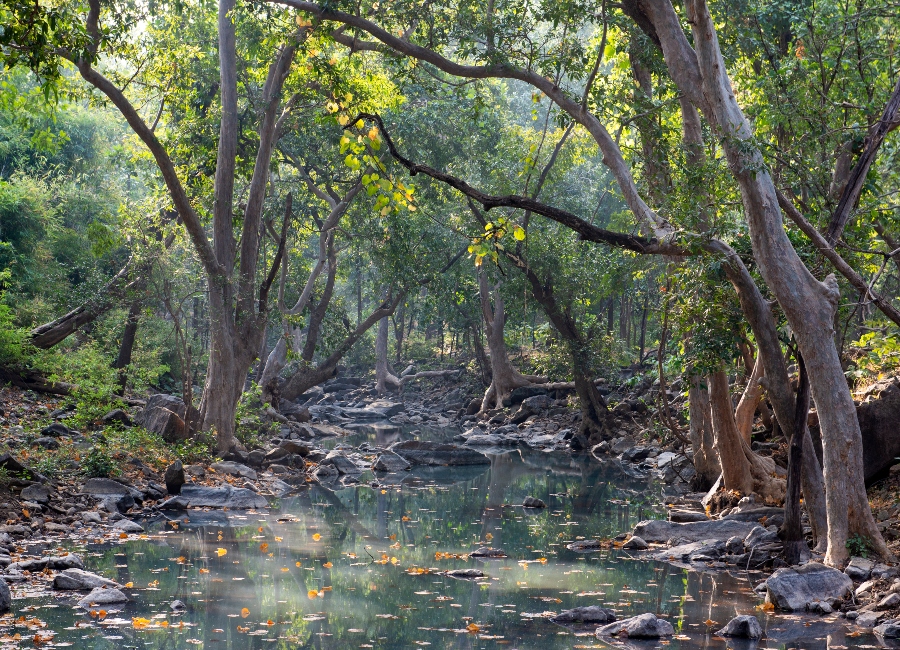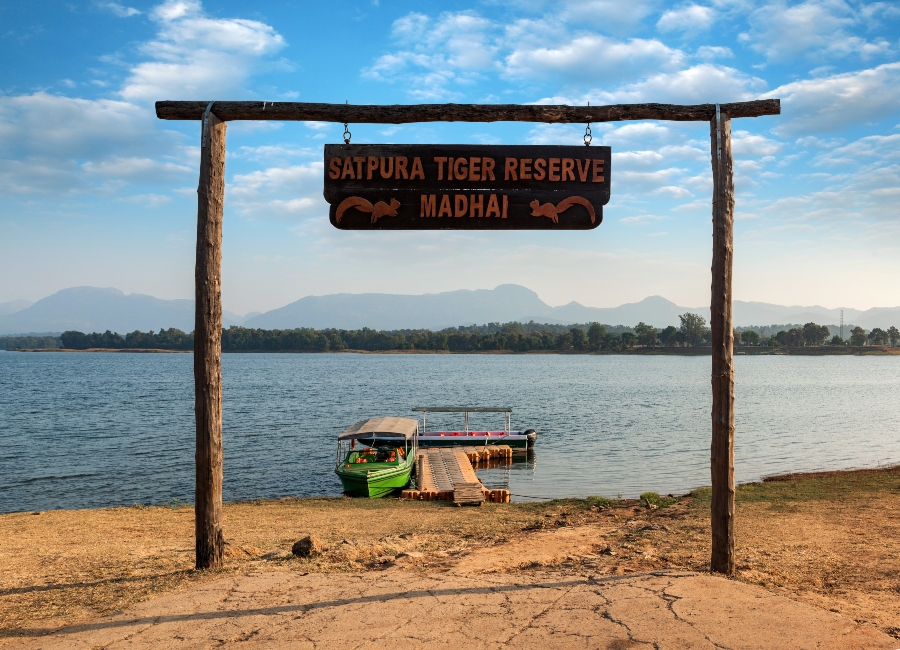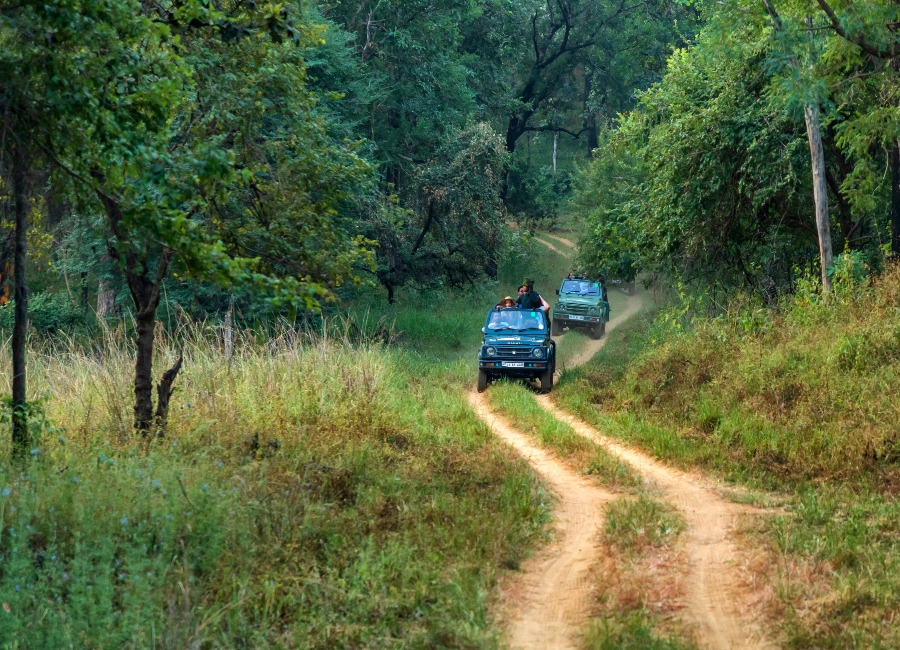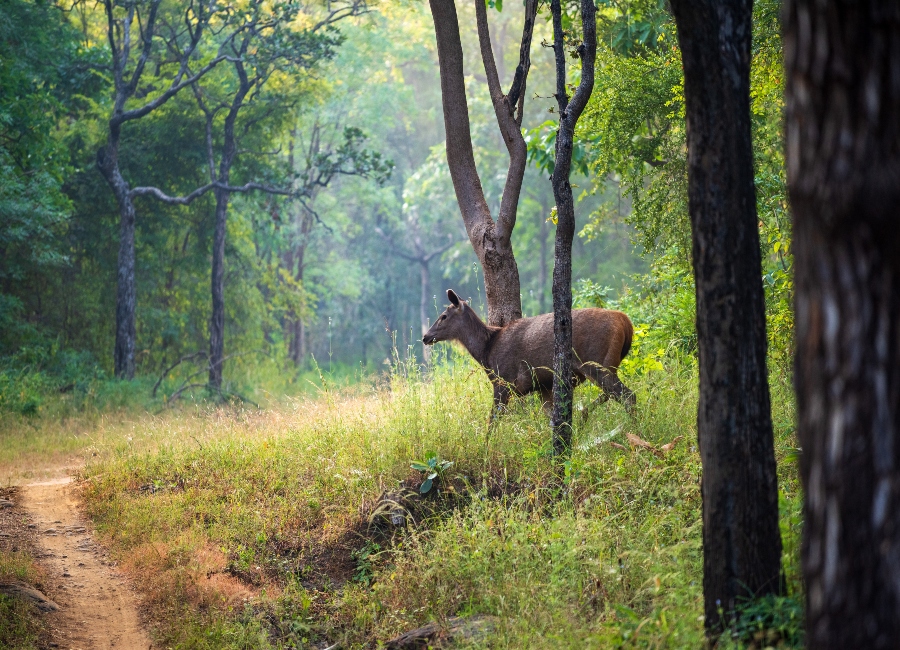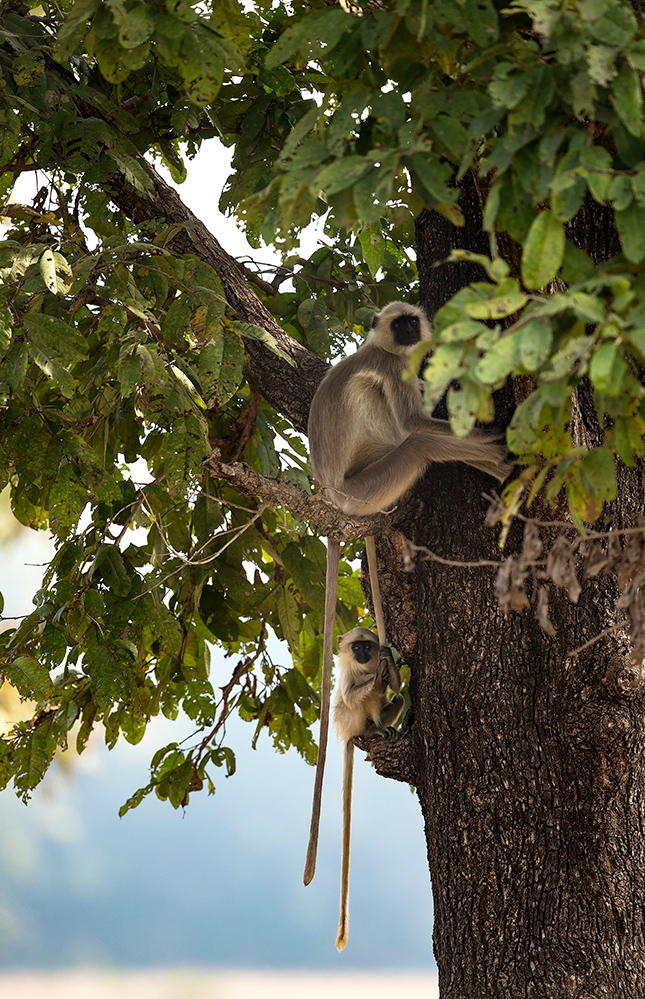Madhya Pradesh, “Middle State” in Hindi, inspired Kipling for his fabulous jungle book.
This central region of India, which is rarely visited by travellers, deserves a lot of attention. Blessed with its temples and its 3 UNESCO World Heritage sites, its jungle and its rich and lush forests, it surprises by combining history and culture, adventure and wildlife!
Among the many architectural wonders of the region, the temples of Khajuraho contain some of the finest stone carvings in India, including some superb erotic works.
There are also many palaces, forts, mosques and stupas; those in the villages of Orchha and Mandu are particularly noteworthy.
Its many national parks and tiger reserves are its main asset and true sanctuaries for its unique and extremely varied wildlife.
The best way to explore it and get off the beaten track is to opt for a 4×4 safari for exceptional encounters with iconic animals such as the Royal Bengal Tiger, White Tiger, Leopard, Indian Bison, Blue Bull, Black Python and a myriad of varieties of mammals, reptiles, birds, insects, trees and shrubs that thrive in their natural environment.
When to go :
The parks are open from October to June. Temperatures can be very low (between 0 and 5 degrees at night) in December and January.
May and June are the hottest and driest months of the year (sometimes over 40°), during which animals spend more time near lakes and waterholes and are easier to see, especially felines.
Therefore, favour the months of January to April and October to December.
The most beautiful parks
Kanha National Park
Nestled in the Maikal Range of Satpura and spread over 940 km² in the Mandala and Kalaghat districts, Kanha is one of the largest parks in Madhya Pradesh.
The park was established in 1879 as a forest reserve and later as a wildlife sanctuary in 1933. It was expanded in 1955 to become one of India’s first national parks.
He is respected worldwide for saving the Barasingha (or swamp deer) from near extinction. It is undoubtedly one of the best managed parks in Asia and since 1973 has been part of the “Project Tiger” launched by the government to preserve the Tiger, a species emblematic of India.
Today it remains one of the best examples of preservation in the country.
It is home to and preserves the highest density of royal tigers in Bengal, as well as many endangered species such as leopard, bison, gaur and deer, including spotted deer, sambar, four-horned antelope, mouse deer and barking deer.
Unique species such as barasingha, blackbuck and swamp deer highlight the reserve’s distinctive wildlife. Other animals such as fox, sloth bear, hyena, honey badger, Indian wolf, wild boar, jungle cat, jackals, langur, macaque and over 230 species of birds also reside here.
There are more than 1000 species of flowering plants in Kanha National Park. In addition, there are aquatic plants in the lakes that are important for the survival of wetlands and migratory bird species.
Its lush forests of sals (large South Asian trees) and bamboo, its grassy, rolling meadows, ravines and winding streams captivated and inspired Rudyard Kipling for his famous Jungle Book.
National Geographic’s award-winning film, Land of the Tigers, was also shot here.
A safari in Kanha will take you back to Kipling’s world if you have read his “jungle book”.
.
Not to be missed :
The panoramic viewpoint of BAMNI DADAR offers a spectacular view of the sunset and the dense forest of Kanha.
Our favourite accommodation: the Banjaar Tola
Try the chic and glamorous tent suites at Banjaar Tola in Kanha National Park. Each of the jungle lodge’s stilted tents has spectacular glass doors leading to a floating veranda with a breathtaking view of the Banjaar River and the central area of Kanha National Park.
Seasons :
In summer, from April to July, the weather in the region remains hot and humid and the temperature can rise up to 43° C, but the chances of Tiger sightings are higher when it is warmer .
Winter, from November to February, is the most ideal season to visit Kanha as the temperature during this period remains very pleasant and conducive to exploring the reserve. The temperature in Kanha during the winters drops to 30°C.
The monsoon, from July to September, is not at all ideal for planning a wildlife visit to Kanha National Park. The reason behind this is that the park remains closed during the season due to roads that are not navigable during this period.
Kanha National Park remains open to tourists from October 16 to June 30.
Bandhavgarh National Reserve :
Bandhavgarh National Park is a hidden paradise for jungle and tiger enthusiasts with many treasures in its bosom!
Located in the Umaria district, Bandhavgarh National Park was once the favourite hunting ground of the maharajas. Bandhavgarh was declared a national park in 1968 and a tiger reserve in 1993 as part of the “Project Tiger” launched by the Indian government.
The forest zone of Bandhavgarh National Park is divided into two parts: the core zone and the buffer zone.
The core area covers an area of about 105 km2 while the buffer zone covers 820 km2 including the Umaria and Katni divisions. The four main zones of the national park are Tala, Magdhi, Khitauli and Panpattha. Tala being the richest area in terms of biodiversity but also the only one accessible to tourism.
This park has the highest population density of tigers in central India, after Kanha National Park. It is mainly known as the home of the big cats, including the white tiger.
Today the park is also home to many exciting wildlife, apart from tigers such as the Asian jackal, Bengal fox, sloth bear, ratel, grey mongoose, striped hyena and jungle cat, leopard, wild pigs, spotted deer, sambar, chausingha, nilgai, chinkara, gaur, Dhole, small Indian civet, palm squirrel, small Bandicoot rat, Common Langurs and rhesus macaque.
It has almost 37 species of mammals, 250 species of birds and 80 species of butterflies and some reptiles.
Bandhavgarh is also a mythological and legendary place.
Apart from the lush jungle environment and its great variety of wildlife, the most fascinating feature of this reserve is the Bandhavgarh Fort, the oldest fort in India, built more than 2000 years ago.
It unveils the legend of Shri Rama in Ramayana, when Shri Rama on his return to his state, after conquering the Ravana War, stayed there and built this fort as a gift to his dear brother Lakshamana.
The name “Bandhavgarh” comes from the combination of the two words: “Bandhav” meaning brother and “Garh” meaning fort.
Today, the fort and the tiger reserve are intertwined and it seems that the fort rules the whole jungle with wild creatures like its people. Visiting this place is truly exotic and confusing.
It can be reached in two ways, either from a jeep track or through a footpath, an alternative preferred by tourists.
The trail starts from the left side of the place called “Shesh Saya” where you can see a unique 11 meter long statue of the Hindu god, Vishnu. A spring water pool is also located in front of the statue, and is believed to be the source of the stream known as Charan Ganga.
The area of Bandhavgarh Fort is also filled with numerous temples where most of them represent the various reincarnations of Lord Vishnu. All these temples date back to around the 10th century.
One of them also houses the sculptures of Shri Ganesha. There are three other temples in the vicinity of the fort that reflect the architecture of the 12th century.
In the Bandhavgarh fort, the vast meadows bring a serene and lush beauty and many ponds are speckled on the fort, always full of water proving to be the great reservoir for many turtles.
You can also explore several man-made caves with inscriptions and cave paintings. Bandhavgarh’s thriving flora and fauna make it one of the major tourist attractions in Madhya Pradesh.
Seasons :
The park is open from October to June. However, the best season to visit it is winter (October to February) because during this period the weather remains very pleasant and favourable for tourism.
Pench National Park :
Pench National Park is located in the southern part of the Satpura Range in Madhya Pradesh.
It covers a total area of 758 km² in the Seoni and Chhindwara districts, and also shares a border with Maharashtra where an additional 257 km² is located, accessible from Madhya Pradesh.
This park takes its name from the River Pench, which flows from north to south and divides it into two almost equal halves.
It is covered with rainforest, grassy areas and teak forests. Its hilly topography is criss-crossed by numerous rivers.
Pench was declared a sanctuary in 1965 and became a national park in 1975. Since 1992, it has been one of the official tiger reserves, a member of the “Project Tiger” launched in 1973 by the Indian government to preserve this emblematic species.
A real treasure thanks to its flora and fauna, this magnificent expanse has been able to preserve more than 285 resident and migratory birds, 4 species of endangered vultures and a large number of felines such as the tiger and the elusive leopard.
After the rainy season the park is crossed by many rivers. But soon they dry up and the river Pench drops sharply. Only basins called “dohs” remain.
Animals can be found around these water points and observing them becomes easy.
In dry seasons the tigers stay by the river and are quite easy to find.
The beauty of this place will undoubtedly remind you of the story of the “Book of the Jungle” by the great Rudyard Kipling.
Seasons :
Summer: March to June
Monsoon: June (mid) – September.
Winter: November to February
Panna National Park:
Old teak woods, colourful indigenous rocks, the clear, pristine waters of the Ken River, the Vindhya mountain ranges and two incredibly high waterfalls provide the setting for one of India’s most renowned national parks.
Rich in biodiversity and wilderness, the national park is also home to Asia’s only active diamond mine.
Panna National Park is generally little frequented compared to other neighbouring national parks, making it a surreal, calm and soothing environment.
The fauna here is diverse and includes deer species such as Sambars (which are listed in the Vulnerable category of the IUCN Red List), wild dogs (Dholes), jackals, Indian Gaurs and Nilgai (the largest antelopes in India), and of course big cats such as leopards and tigers, among others.
Few people know this, but Panna is also home to the oldest female elephant, called Vatsala, which is currently about 96 years old.
Panna National Park has been rated as one of the best managed and maintained national parks in India by the Ministry of Tourism of India and won the Award of Excellence in 2007.
However, due to poaching and other practices, the number of tigers in the park was reduced to only 2-4 in 2008.
An effective team led by IFS officer, MR Shreenivasa Murthy, reintroduced tigers from other national parks to Panna with proper surveillance and protection. They successfully bred them and subsequently the number of tigers increased satisfactorily to 35 today.
Panna is therefore today best known for its incredible tiger conservation.
The park is also home to a variety of forest birds, including 6 types of vultures, Paradise Flycatchers and Savanah Night pots. These colourful and spirited birds are an absolute feast for the eyes.
While the Paradise Flycatcher, which is also the state bird of Madhya Pradesh, has fine white feathers and is aptly named Dudhraj (King of Milk) in Hindi, the Savanah Nightjar is a master of camouflage and is difficult to spot.
Other sites such as Ken Gharial Shrine, Raneh Fall, Pandav Fall, Dhubela Museum, Ajaygarh Fort, Kalinjar Fort and the Khajuraho Temples are worth a visit.
Satpura National Park :
The Satpura National Park is spread over Satpura Hills on the highlands of central India.
It is the place where all true wildlife lovers enjoy a peaceful jungle away from the hustle and bustle of safari jeeps. Beautiful hilly terrain, deep gorges, streams, virgin forests etc.
Together with the adjacent Pachmarhi and Bori sanctuaries, the Satpura Tiger Reserve covers an area of 1427 km2, while the Satpura National Park covers an area of 524 km2.
Various ways of observing the fauna distinguish it from other tiger reserves in India. Here you can go on safari by jeep, on foot, by boat and even by canoe. Of course we also offer elephant safaris out of respect for this beloved animal.
The preserved Highland eco-system of the Satpura National Park is unique and was created in 1981.
Good to know :
As a result of certain abuses, a quota system is now in force in all Indian national tiger reserves, which was not necessarily the case in the past. This is good for the animals, especially the tiger, which is less disturbed by the influx of 4X4 vehicles, and it is also positive for visitors who have improved viewing conditions.
Between 15 and 35 vehicles are authorised per session depending on the zone. Everything is listed on the official websites in detail.
6 passengers are allowed per 4X4, who come with an expert naturalist guide and a driver..
National parks in India are closed from 1 July to mid-October.
All national parks in the state of Madhya Pradesh are closed on Wednesday afternoons. Therefore, there are no afternoon safaris on Wednesdays.
For domestic flights the baggage allowance is 15 kg per person in economy class.

